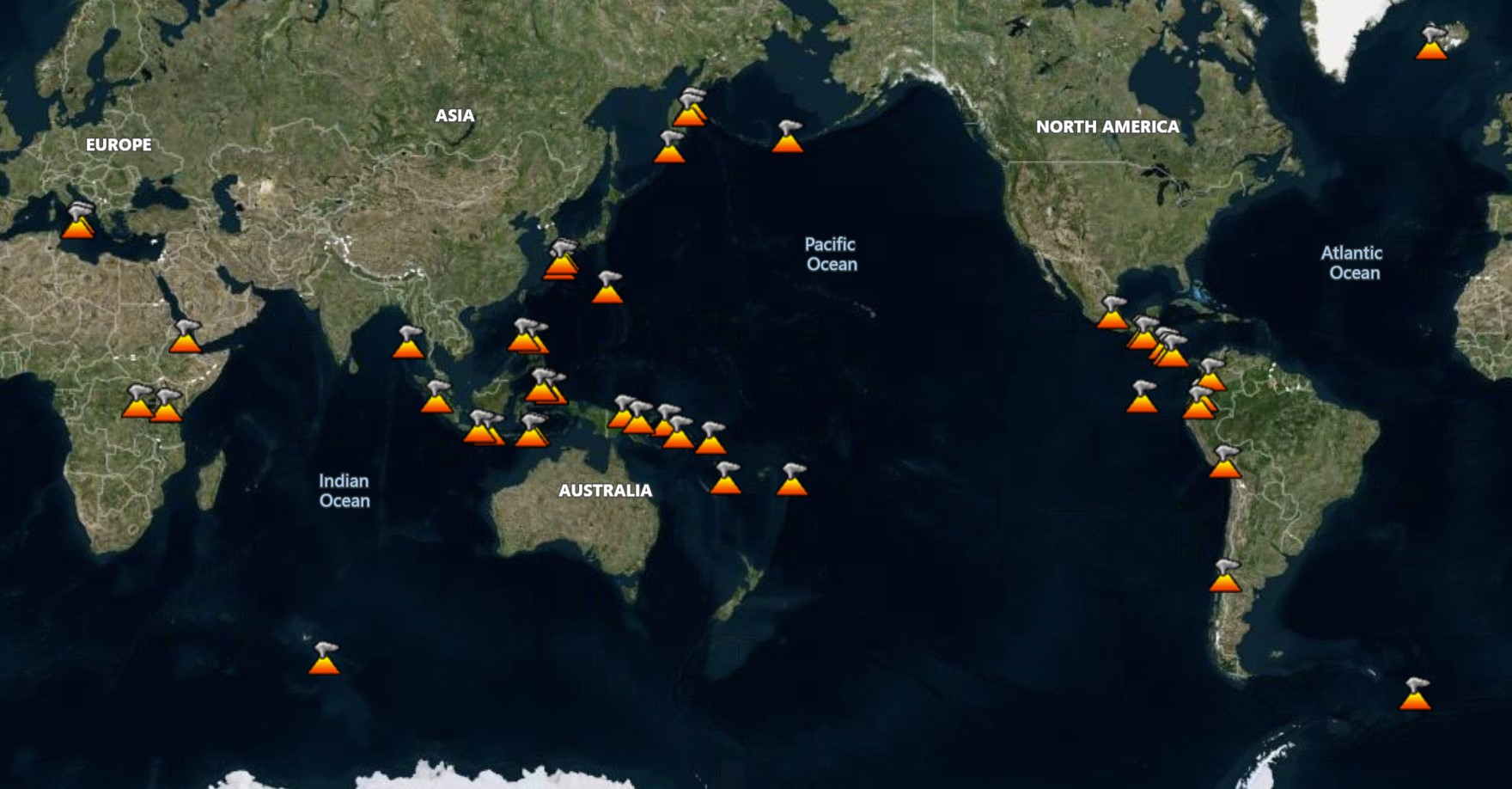TIP: FURBALL CREW BOOTIES
FURBALL CREW BOOTIES

SV MAISON DE SANTE has four legged crew that need to stretch their land legs on the daily. They have just sailed to Cartegena, Columbia wherer there are very limitted green spaces. This means that walks are often on concrete or other hard manmade HOT surfaces.
Nicole says, "For traveling with pets to Colombia: we brought shoes/protection for our pet."
SY MAISON DE SANTÉ 🇺🇸 Nicole & Keenan - Cal 46'


DANGERS
DANGERS 🌋💨 🌀 🌪️ 🏴☠️ ☣️🪸 ☢️ 📦 🌊
EXPLORE THESE DANGERS

Uncharted and Mischarted Reefs in the South Pacific
- Cato Bank (Australia)
- A poorly charted shoal southeast of the Great Barrier Reef. Reports suggest it has steep sides and shallow depths.
- Minerva Reefs (North and South)
- Location: ~23° 37′ S, 178° 57′ W
- These atolls in the Tonga region are visible but not always accurately charted on older maps.
- Grand Passage Area (New Caledonia)
- Several uncharted coral heads and bommies exist in the vicinity of Grand Passage, northwest of New Caledonia.
- Phoenix Islands (Kiribati)
- This area has multiple reefs that remain uncharted or mischarted due to limited survey data.
- Orona (Hull Atoll) Lagoon (Phoenix Islands)
- Inner passages and coral heads within the lagoon are often uncharted, presenting hazards for unwary mariners.
- Bikini Atoll (Marshall Islands)
- Despite its fame, several submerged bommies and coral heads are either uncharted or incorrectly marked.
- Tuvalu Reef Complex
- Scattered reefs around Tuvalu are mischarted or lack sufficient detail on most nautical charts.
- Vanikoro Island (Solomon Islands)
- Location: ~11° 40′ S, 166° 55′ E
- Dangerous reefs surround the island, some of which are unmarked on older charts.
- Durand Reefs (Papua New Guinea)
- The region is notorious for hidden reefs that are rarely documented.
- Tubbataha Reef (Philippines)
- While well-known, nearby waters feature uncharted shoals that can be perilous.
- Manihiki Plateau (North of Cook Islands)
- This submarine plateau contains poorly surveyed seamounts and reefs.
- Beveridge Reef (South of Niue)
- Location: ~20° 00′ S, 167° 49′ W
- A submerged reef with a shallow lagoon, it is barely visible at low tide and often mischarted.
- Star Reefs (Fiji Region)
- Many reefs in Fiji’s outer islands, especially near Lau Group, have incorrect positions on older maps.
- Chesterfield Reefs (Coral Sea)
- Scattered reefs in the Coral Sea, west of New Caledonia, have many submerged dangers.
- Pukapuka Atoll (Cook Islands)
- Coral heads and submerged dangers near the atoll are frequently overlooked or poorly charted.
Tips for Safe Navigation in Uncharted or Mischarted Waters
- Satellite Imagery: Use platforms like Google Earth in conjunction with electronic charts for reef identification.
- Seek Local Knowledge: Local mariners and communities often have detailed knowledge of reef locations.
- High Lookout: Assign crew to maintain a visual watch, especially when transiting coral areas.
- Avoid Night Sailing: Navigating through these regions at night greatly increases the risk.
- Update Charts: Use tools like Navionics or C-Map to access the latest user-generated updates.
- Pilot Books: Refer to updated sailing guides for regional advice.
A microburst is a sudden, intense downdraft of wind from a thunderstorm or cumulonimbus cloud, spreading outward when it hits the surface. This phenomenon is short-lived (typically 5–15 minutes) but extremely powerful, with wind speeds often exceeding 100 mph (160 km/h).
Microbursts can be wet (with heavy rainfall) or dry (with little or no precipitation reaching the surface). They’re particularly dangerous for sailors and aviators because of their unpredictable nature and potential to create extreme and shifting wind conditions.
Characteristics of Microbursts
- Formation:
- Caused by a cooling process within a thunderstorm. Raindrops evaporate or cool as they fall, chilling the air, which then descends rapidly.
- This downdraft spreads radially upon hitting the ground or sea surface.
- Effects at Sea:
- Sudden wind shifts and gusts.
- Large, unpredictable waves caused by wind meeting the water’s surface.
- Rapidly changing weather conditions, sometimes with torrential rain or hail.
- Difficult steering due to wind shifts.
- Geographic Prevalence:
- Found worldwide but more common in areas with frequent thunderstorms (tropical and subtropical regions, mid-latitudes during stormy seasons).
How Sailors Can Identify Microbursts
- Visual Indicators:
- A dark, rapidly growing cumulonimbus cloud with a distinct rain shaft.
- Virga (streaks of rain evaporating before reaching the surface) may indicate dry microbursts.
- Dust or spray kicked up by winds on the water’s surface beneath a thunderstorm.
- Weather Changes:
- Rapid drop in air temperature.
- Calm winds suddenly escalating into intense gusts.
- Radar and Instruments:
- Doppler radar (onshore) can detect microbursts, but sailors may rely on weather reports or alerts.
- Barometric pressure drops and erratic wind readings can precede microburst activity.
How Sailors Deal with Microbursts
- Preparation:
- Monitor Weather Reports: Stay updated on regional thunderstorm activity.
- Use Radar and Forecasting Tools: Marine weather apps and satellite imagery can help identify storm systems.
- Maintain Situational Awareness: Regularly scan the horizon for thunderstorm activity.
- Responding to a Microburst:
- Reduce Sail Area: Reef sails early or drop sails completely if a thunderstorm approaches.
- Turn into the Wind: If possible, position the bow toward the wind to reduce the risk of capsizing or broaching.
- Secure Loose Items: Prevent objects from becoming projectiles during intense gusts.
- Engage the Engine: If sailing becomes untenable, use the engine to maintain control.
- Maintain Control: Keep hands on the helm and adjust trim to counter sudden wind shifts.
- After the Microburst:
- Assess any damage to sails, rigging, or deck fittings.
- Check for any injuries among the crew.
- Update your navigation plan if the microburst altered your position or course significantly.
Practical Tips for Sailors
- Avoidance: The best way to handle a microburst is to steer clear of thunderstorms.
- Night Sailing Precautions: Microbursts are harder to detect at night. Sail with extra caution and use radar if available.
- Communication: Share position updates with nearby vessels or coastal authorities if sailing in storm-prone regions.
- Safety Gear: Ensure all crew members wear life jackets and safety harnesses during stormy weather.
Microbursts are rare but formidable. A well-prepared sailor with situational awareness can significantly reduce the risks posed by these intense weather events.

Detecting Floating Pumice from Underwater Volcanic Activity
Floating pumice, created during underwater volcanic eruptions, poses unique challenges and hazards for mariners. These lightweight volcanic rocks float because of their porous nature and can create vast pumice rafts, potentially damaging propellers, clogging water intakes, or reducing visibility.
Here’s how sailors can detect and navigate safely around floating pumice:
Visual Indicators
- Color Change in Water:
- Look for unusual discoloration, such as:
- Light gray, brown, or yellowish areas in the water.
- A milky or frothy surface appearance, often due to volcanic ash or debris mixed with pumice.
- Look for unusual discoloration, such as:
- Floating Debris:
- Pumice rafts may resemble patches of foam, seaweed, or driftwood but often cover vast areas and have a uniform gray or white color.
- The debris often extends for miles and can appear deceptively thin.
- Shoreline Observations:
- After eruptions, floating pumice may wash ashore in large quantities, indicating its presence nearby.
https://www.sbs.com.au/news/article/this-floating-pumice-raft-in-the-pacific-could-help-save-the-great-barrier-reef/ekdi2s8ad
Physical and Mechanical Indicators
- Unusual Vibration or Noise:
- When passing through pumice, propellers or engines may emit unusual vibrations or sounds as the porous rocks strike the blades.
- Engine Performance Issues:
- Engines relying on seawater for cooling may overheat if intakes become clogged with pumice particles.
Meteorological and Volcanic Clues
- Volcanic Alerts:
- Pay attention to volcanic activity warnings or updates from organizations such as:
- The Global Volcanism Program or local geological survey agencies.
- Regional maritime safety broadcasts.
- Pay attention to volcanic activity warnings or updates from organizations such as:
- Nearby Volcanic Activity:
- Be cautious when sailing near active underwater volcanoes (e.g., Tonga, Vanuatu, Indonesia, or other Pacific Rim areas). Pumice can drift hundreds of miles from the eruption site.
Detection Tools
- Radar:
- Pumice rafts are difficult to detect on standard marine radar due to their low profile. However, larger or thicker rafts may sometimes appear as weak returns.
- Satellite Imagery:
- Services like Sentinel-2 or weather satellites often provide real-time data on pumice raft locations after volcanic eruptions. Use apps or tools that provide satellite overlays.
- Sonar:
- If equipped, sonar can detect unusual seafloor activity indicative of underwater eruptions. Sonar cannot directly detect floating pumice but may warn of nearby volcanic activity.
Sailor Response to Floating Pumice
- Avoidance:
- Alter course to bypass pumice rafts whenever possible.
- Avoid sailing at night in regions with known volcanic activity to reduce the risk of encountering unseen debris.
- Reduce Speed:
- Slow down to minimize damage to the hull, propellers, or engines if passage through pumice is unavoidable.
- Monitor Engine Cooling:
- Check for overheating frequently if sailing through pumice-laden waters.
- Keep spare filters and impellers for seawater cooling systems onboard.
- Use a Lookout:
- Assign crew to watch for floating debris when approaching regions of volcanic activity or after volcanic alerts.
Example Regions at Risk for Pumice Rafts
- South Pacific:
- Tonga and Vanuatu frequently experience underwater eruptions, creating large pumice fields.
- Indonesia:
- Active underwater volcanoes in the Banda Sea and along volcanic arcs.
- Caribbean:
- Submarine volcanoes like Kick-’em-Jenny near Grenada.
- Japan:
- Volcanic islands like Izu-Bonin often release pumice.
Conclusion
Detecting floating pumice requires vigilance, situational awareness, and the use of available tools like weather reports, satellite imagery, and radar. By understanding visual and physical signs, mariners can safely navigate and minimize risks associated with these volcanic hazards.
Floating Debris in the South Pacific from Storms and Tsunamis
The South Pacific is prone to intense storms, cyclones, and tsunamis that can dislodge, scatter, and create vast fields of floating debris. These hazards can pose serious risks to mariners, damage marine ecosystems, and even drift across ocean currents for years.
Here’s an overview of floating debris commonly found in the South Pacific after such events:
Types of Floating Debris
Natural Debris
- Uprooted Vegetation:
- Trees, branches, and logs ripped from shorelines or river mouths during storm surges or tsunamis.
- Mangrove trees are common near tropical islands.
- Coral Fragments:
- Broken coral heads and rubble dislodged by strong wave action.
- These can often be mixed with sand or volcanic material.
- Volcanic Material:
- Pumice stones from underwater eruptions are often redistributed by storm surges.
- Marine Biota:
- Kelp, seagrass, and other seaweed mats, often uprooted during tsunamis or storm activity.
Man-Made Debris
- Construction Materials:
- Wooden beams, metal sheets, and concrete rubble from damaged coastal structures.
- Floating remnants of docks and marinas.
- Boats and Marine Equipment:
- Small fishing vessels, dinghies, and parts of yachts or shipping containers washed out to sea.
- Buoys, nets, and mooring equipment.
- Household Items:
- Plastic containers, furniture, and appliances from coastal homes.
- Hazardous materials like propane tanks or fuel drums may also float.
- Shipping Debris:
- Cargo containers lost overboard during storms, some of which float or partially submerge.
- Goods inside containers (e.g., electronics, textiles) can spill out, creating smaller debris.
Sources of Debris
- Cyclones and Storm Surges:
- Cyclones generate extreme winds and waves, lifting debris from shores and shallow waters.
- Examples include debris from Cyclone Harold (2020), which impacted Vanuatu and Fiji.
- Tsunamis:
- Tsunamis displace vast amounts of material from coastlines and floodplains. Notable events:
- The 2004 Indian Ocean Tsunami, which deposited debris far into the ocean.
- The 2011 Japan Tsunami, which released millions of tons of debris into the Pacific Ocean.
- Tsunamis displace vast amounts of material from coastlines and floodplains. Notable events:
- River Runoff:
- Flooding from heavy rains washes inland debris into rivers, which carry it out to sea.
- Marine Accidents:
- Storms can damage ships and offshore platforms, contributing to floating wreckage.
Hazards Posed to Mariners
- Collision Risk:
- Floating logs or large debris can damage hulls or puncture small vessels.
- Partially submerged cargo containers are particularly dangerous as they can be hard to spot.
- Propeller Fouling:
- Fishing nets, ropes, or vegetation can entangle propellers, disabling vessels.
- Reduced Visibility:
- Floating debris fields can be extensive, obscuring water conditions and creating navigation challenges.
- Water Contamination:
- Hazardous materials such as oil, fuel, or chemicals can leak from storm debris.
How Sailors Can Detect and Avoid Debris
- Visual Observation:
- Watch for unusual slicks, discolored patches, or floating items on the horizon.
- Debris is often clustered near eddies or gyres.
- Radar:
- Larger items like cargo containers may be detectable on marine radar, but smaller debris like logs may not.
- Local Reports:
- Monitor marine broadcasts, coast guard updates, and local authorities for debris warnings.
- Satellite Imagery:
- Advanced satellite systems can detect large debris fields; mariners can check updates from NOAA or other agencies.
- Avoid Storm Paths:
- Debris is often concentrated in the aftermath of storms and along tsunami inundation zones.
Significant Events and Debris Fields
- 2011 Japan Tsunami:
- Debris from Japan was carried across the Pacific, with some reaching the west coast of North America years later.
- Included fishing boats, parts of buildings, and millions of smaller items.
- Cyclone Winston (2016):
- Left massive amounts of debris in Fijian waters, including damaged boats and building materials.
- Tropical Storms in the Solomon Islands and Vanuatu:
- Frequent smaller-scale debris from storm surges.
Safety Measures for Mariners
- Daylight Sailing:
- Navigate debris-prone areas during daylight to improve visibility.
- Reduce Speed:
- Slow down in suspected debris fields to minimize collision damage.
- Emergency Equipment:
- Carry spare tools for clearing fouled propellers (e.g., knives or cutters).
- Avoid Coastal Areas:
- Steer clear of coastlines and river mouths after storms or tsunamis.



